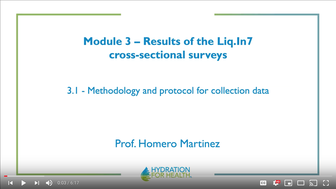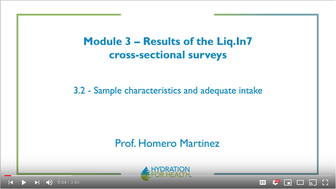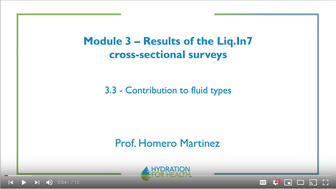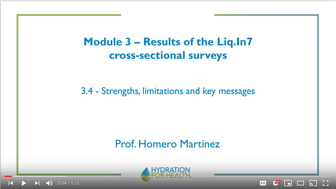3. Results of the Liq.In7 cross-sectional surveys
Cross-sectional surveys having as primary aim the assessment of fluid intake were conducted in 13 countries in 3 continents [1-4]. A sample of 3611 children (4–9 years), 8109 adolescents (10–17 years) and 16,276 adults (18-70 years) representative of each national population were request to complete a fluid-specific diary over a period of 7 consecutive days. The results indicated that according to the dietary reference values set by the European Food Safety Authority 50% of the women and approximately 60% of the men are at risk of an inadequate fluid intake. In the samples of the European children and adolescents noncompliance to the reference values ranged from 34% (Spain) to 94% (Belgium).
Besides the risk for an inadequate intake, the risk for an excessive intake of sugar sweetened beverages (SSB) requires to be evaluated since individuals consuming SSB on a daily basis are at an increased risk of becoming overweight or obese compared to non-regular consumers [5,6]. The highest mean intakes of juices and SSB were observed in the sample of English children and adolescents (mean 890 ml/day or 50% of total fluid intake), and in the other European countries the intake of juices and SSB reached from 25% to 35% in respectively French and Polish children and adolescents.
Having identified such relatively high proportion of individuals at risk for an inadequate intake or excessive SSB intake, setting easy to understand recommendations on water intake and guiding individuals towards a healthier fluid intake seem pertinent steps.
References
- Ferreira-Pego C, et al. 52015) Total fluid intake and its determinants: cross-sectional surveys among adults in 13 countries worldwide. EJN 54 Suppl 2, 35-43
- Guelinckx I, et al. (2015) Intake of water and different beverages in adults across 13 countries. EJN 54 Suppl(2), S45-S55
- Guelinckx I, et al. (2015) Intake of water and beverages of children and adolescents in 13 countries. EJN 54 Suppl(2), S69-S79
- Iglesia I, et al. (2015) Total fluid intake of children and adolescents: cross-sectional surveys in 13 countries worldwide. EJN 54 Suppl 2, 57-67
- Ebbeling CB, et al. (2012) A randomized trial of sugar-sweetened beverages and adolescent body weight. N Engl J Med 367(15), 1407-1416
- Pan A, et al. (2013) Changes in water and beverage intake and long-term weight changes: results from three prospective cohort studies. Int.J Obes.(Lond.) 37(10), 1378-1385










